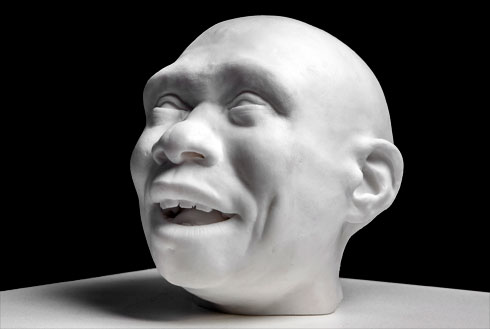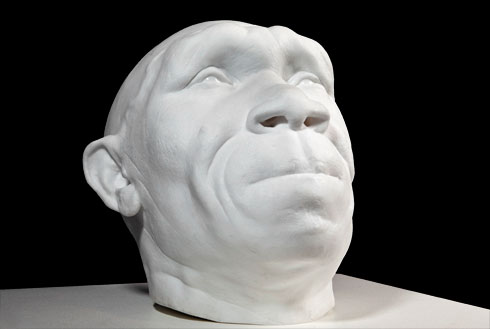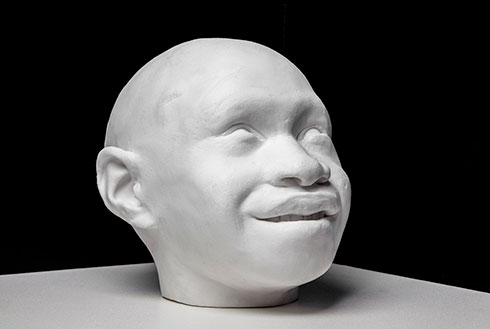- Home
- > Nature online
- > Life
- > Human evolution
- > Humans in Britain
- > First Britons
Primary navigation
The first Britons
At least four species of humans came to Britain in different waves of occupation. Who were they and when did they live here?

The pioneers
The identity of the very first people to venture into Britain is still a mystery.
No human remains have been found, but stone tools discovered at Happisburgh in Norfolk and Pakefield in Suffolk reveal a human presence between 950,000 and 700,000 years ago. The age of the finds suggests this could have been Homo antecessor, a human species so far only found in Spain.
Whoever they were, these humans were able to survive in colder temperatures than today. Although conditions at Pakefield were similar to the Mediterranean, Happisburgh was like modern-day southern Scandinavia.
Find out more about Homo antecessor
Watch our video about discovering these early pioneers
Image: Young male Homo antecessor reconstructed from 800,000-year-old fossil remains found at Atapuerca in Spain.

Homo heidelbergensis
Tall and imposing, this early human species is the first for whom we have fossil evidence in Britain: a leg bone and two teeth found at Boxgrove in West Sussex.
Living here about 500,000 years ago these people skilfully butchered large animals, leaving behind quantities of bones from horse, deer and rhinoceros. This activity suggests they were able to plan and cooperate, hunting as a group.
Strong and muscular, with large brow-ridges and relatively large brains, they were intelligent people who shaped tools with precision. Their handaxes and other stone tools have been found at several sites around Britain.
Find out more about Homo heidelbergensis
Image: Adult male Homo heidelbergensis reconstructed from fossil remains dated to 600,000-250,000 years ago, uncovered at Petralona, Greece.

Neanderthals, Homo neanderthalensis
We know early Neanderthals were in Britain about 400,000 years ago because of the discovery of the skull of a young woman from Swanscombe, Kent. They returned to Britain many times between then and 50,000 years ago, and perhaps even later.
During this time the climate regularly fluctuated between warm and cold. Neanderthals learned to adapt and survive by exploiting natural resources, although they were beaten back from Britain several times by particularly cold periods.
Undoubtedly intelligent and able to communicate, Neanderthals were innovative toolmakers. Injuries found on their prey tell us that they were brave and skilful hunters.
Find out more about Neanderthals
Watch our video about Neanderthal hunters at La Cotte de St Brelade
Image: Adult female Neanderthal reconstructed from approximately 50,000-year-old fossil remains unearthed at Forbes' Quarry, Gibraltar.

Modern humans, Homo sapiens
Our own species is a relative newcomer to Britain. The earliest direct evidence is a jaw fragment found in Kent’s Cavern, Devon. Scientific analysis estimated it to be at least 40,000 years old.
For thousands of years the presence of modern humans in Britain remained brief and sporadic. It has only been continuous since about 12,000 years ago.
Modern humans stand out for their creativity and rich culture. Over a relatively short period, they developed a diverse tool kit, using bone and ivory as well as stone, and created artistic representations of their world in carvings, paintings and sculptures on a scale not seen before.
Find out how modern humans evolved and spread from Africa
Image: Homo sapiens child reconstructed from fossil remains dated to about 100,000 years ago, found at Qafzeh Cave, Israel.
Related information
- Map of key archaeological sites in Britain
- Britain's Ice Age animals
- Earliest human footprints outside Africa, news Jan 2014
External links
Toolbox
- Contact and enquiries
- Accessibility
- Site map
- Website terms of use
- © The Trustees of the Natural History Museum, London
- Information about cookies
- Mobile